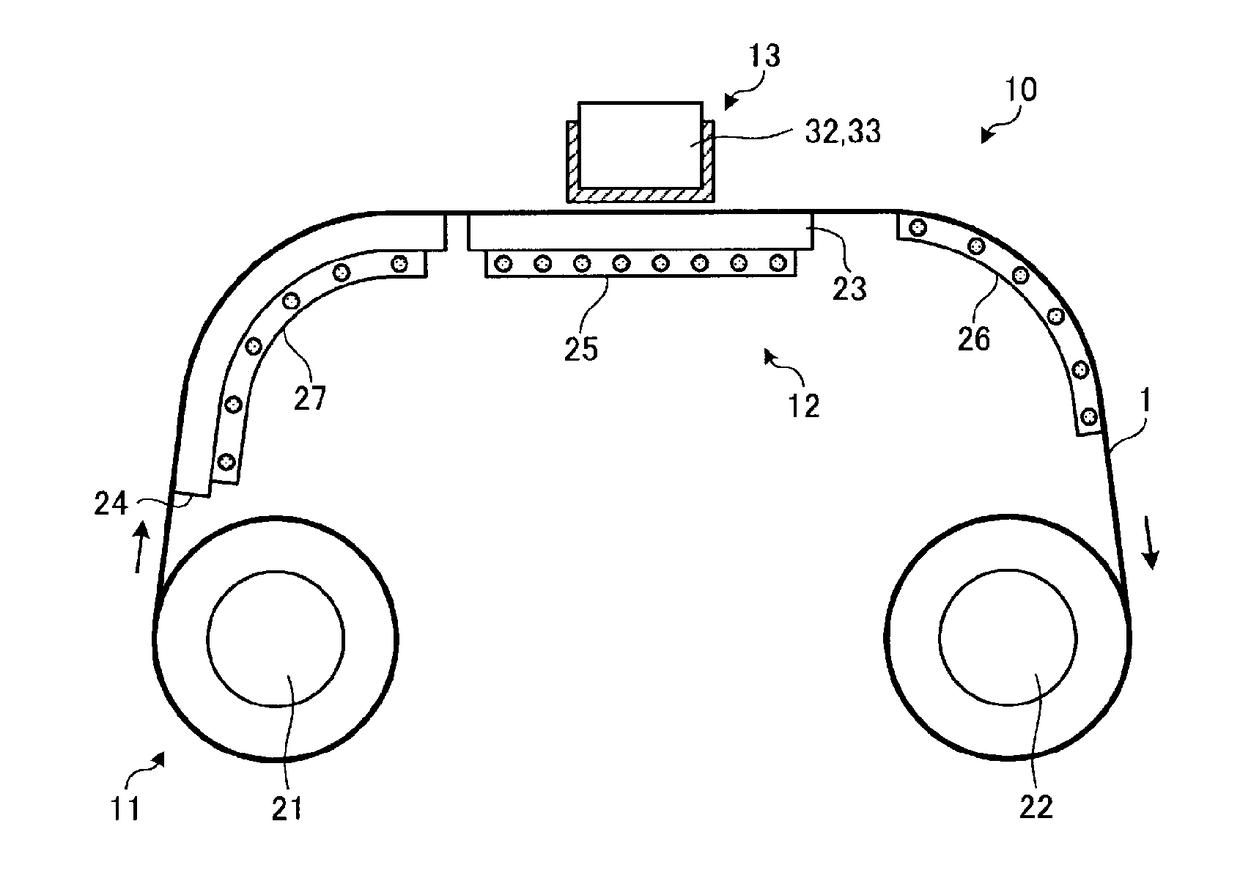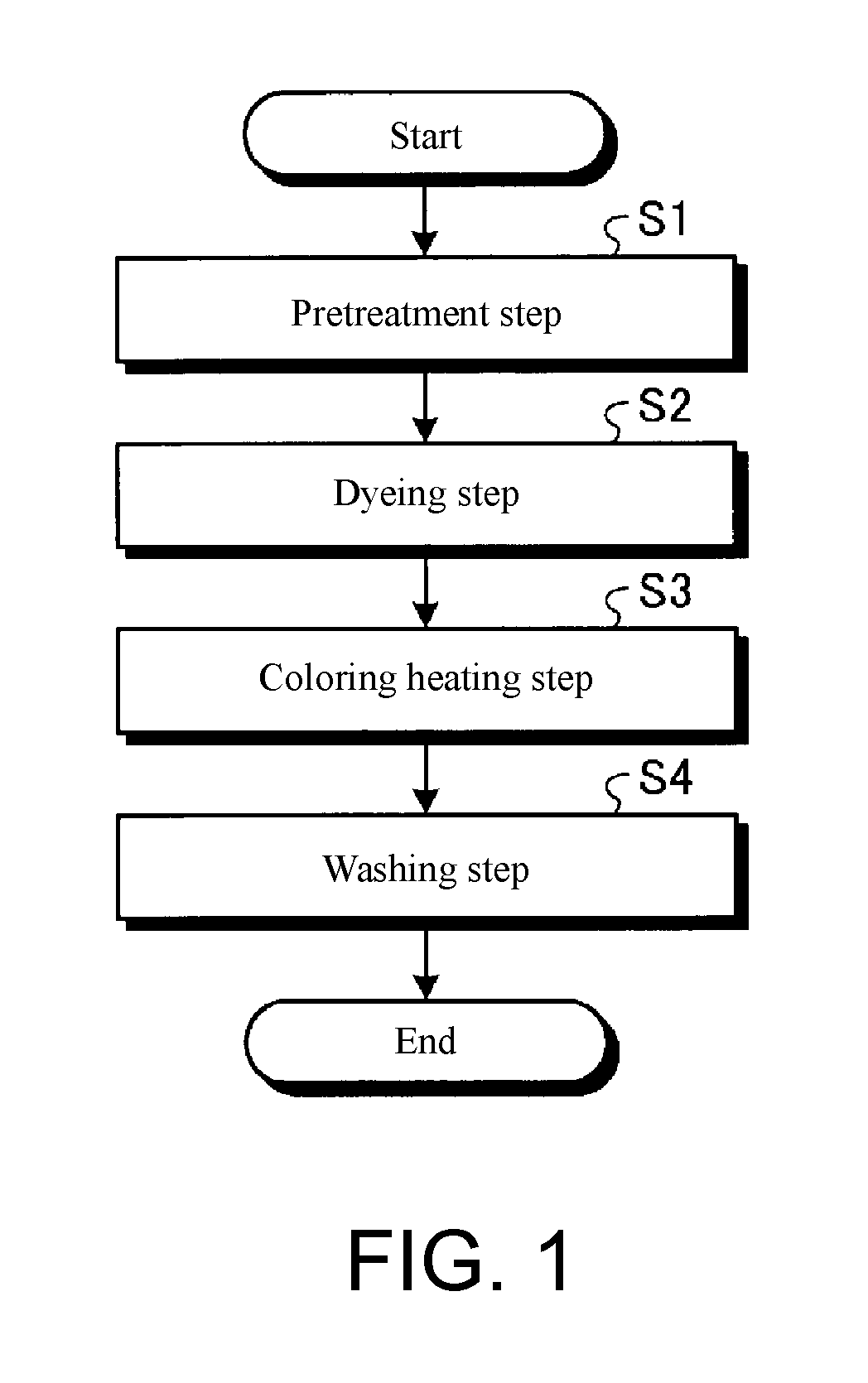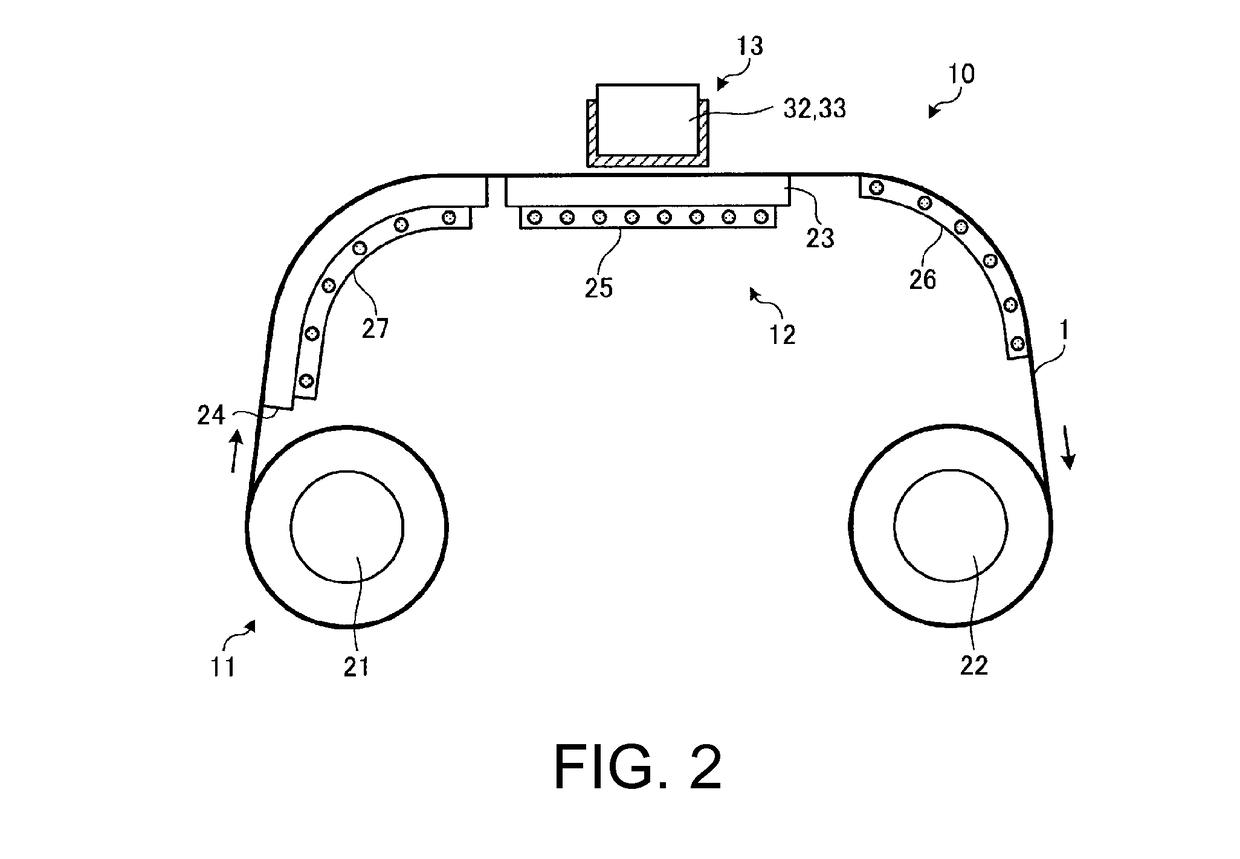Textile printing method, dyeing apparatus, textile printing ink, and treatment ink
a textile printing and dyeing technology, applied in printing, typewriters, textiles and paper, etc., can solve the problems of difficult removal, time-consuming labor, and difficulty in removing any polymer compound left on the fabric, so as to increase the proportion of uv-curable compound in textile printing ink, increase the viscosity, and increase the effect of the proportion of uv-curable compound in the treatment ink
- Summary
- Abstract
- Description
- Claims
- Application Information
AI Technical Summary
Benefits of technology
Problems solved by technology
Method used
Image
Examples
embodiment
[0031]In a textile printing method and a dyeing apparatus 10 according to this embodiment, inkjet printing is employed to dye a fabric 1. The textile printing method and the dyeing apparatus 10 are described referring to FIGS. 1 to 4.
[0032]FIG. 1 is a flow chart of the textile printing method. FIG. 2 is an illustrative drawing of the dyeing apparatus. FIG. 3 is a schematic plan view of the dyeing apparatus. FIG. 4 is an illustrative drawing of the textile printing method.
[0033]In advance of describing the textile printing method, the dyeing apparatus 10 is described referring to FIGS. 2 and 3. In the dyeing apparatus 10, textile printing inks are discharged from inkjet heads toward a fabric 1 fed by the Role-to-Role method and applied to the fabric 1, as illustrated in FIGS. 2 and 3. The dyeing apparatus 10 has a fabric feeder 11, a heater 12, and an inkjet device 13.
[0034]The fabric feeder 11 has a feed roller 21, a take-up roller 22, a platen 23, and a guide 24. The feed roller 21...
example 2
[0051]UV-curable compound: 30% by weight[0052]Readily water-soluble compound: 10% by weight[0053]Coloring material: 10% by weight[0054]Solvent: 50% by weight
[0055]The treatment ink used in the inkjet head for treatment 33 is described below. The treatment ink at least includes an UV-curable compound polymerizable by ultraviolet light into a water-soluble, UV-curable resin, a readily water-soluble compound added to adjust solubility of the water-soluble, UV-curable resin, a solvent containing moisture, and an auxiliary added to facilitate the process to dye the fabric (coloring auxiliary).
[0056]The UV-curable compound polymerized by ultraviolet light into the water-soluble, UV-curable resin, readily water-soluble compound, and solvent of the treatment ink are similar to the materials of the textile printing ink, which will not be described again. Examples of the auxiliary may include surface active agents, pH adjusters, and mordants.
[0057]The treatment ink contains the UV-curable com...
example 1
[0060]UV-curable compound: 20% by weight[0061]Readily water-soluble compound: 15% by weight[0062]Auxiliary: 15% by weight[0063]Solvent: 50% by weight
[0064]As described earlier, the proportion of the UV-curable compound differs between the textile printing ink and the treatment ink. The textile printing ink contains the UV-curable compound in a greater proportion than the treatment ink, which may be rephrased that the treatment ink contains the UV-curable compound in a smaller proportion than the textile printing ink. This is because no precaution may be necessary against smearing of the colorless treatment ink containing no coloring material, and the treatment ink, even if it smears on the fabric, will be removed in a washing step described later. The proportion of the auxiliary in the treatment ink, therefore, may be increased in accordance with the coloring material of the textile printing ink. The proportion of the coloring material in the textile printing ink may be suitably dec...
PUM
| Property | Measurement | Unit |
|---|---|---|
| Fraction | aaaaa | aaaaa |
| Fraction | aaaaa | aaaaa |
| Percent by mass | aaaaa | aaaaa |
Abstract
Description
Claims
Application Information
 Login to View More
Login to View More - R&D
- Intellectual Property
- Life Sciences
- Materials
- Tech Scout
- Unparalleled Data Quality
- Higher Quality Content
- 60% Fewer Hallucinations
Browse by: Latest US Patents, China's latest patents, Technical Efficacy Thesaurus, Application Domain, Technology Topic, Popular Technical Reports.
© 2025 PatSnap. All rights reserved.Legal|Privacy policy|Modern Slavery Act Transparency Statement|Sitemap|About US| Contact US: help@patsnap.com



